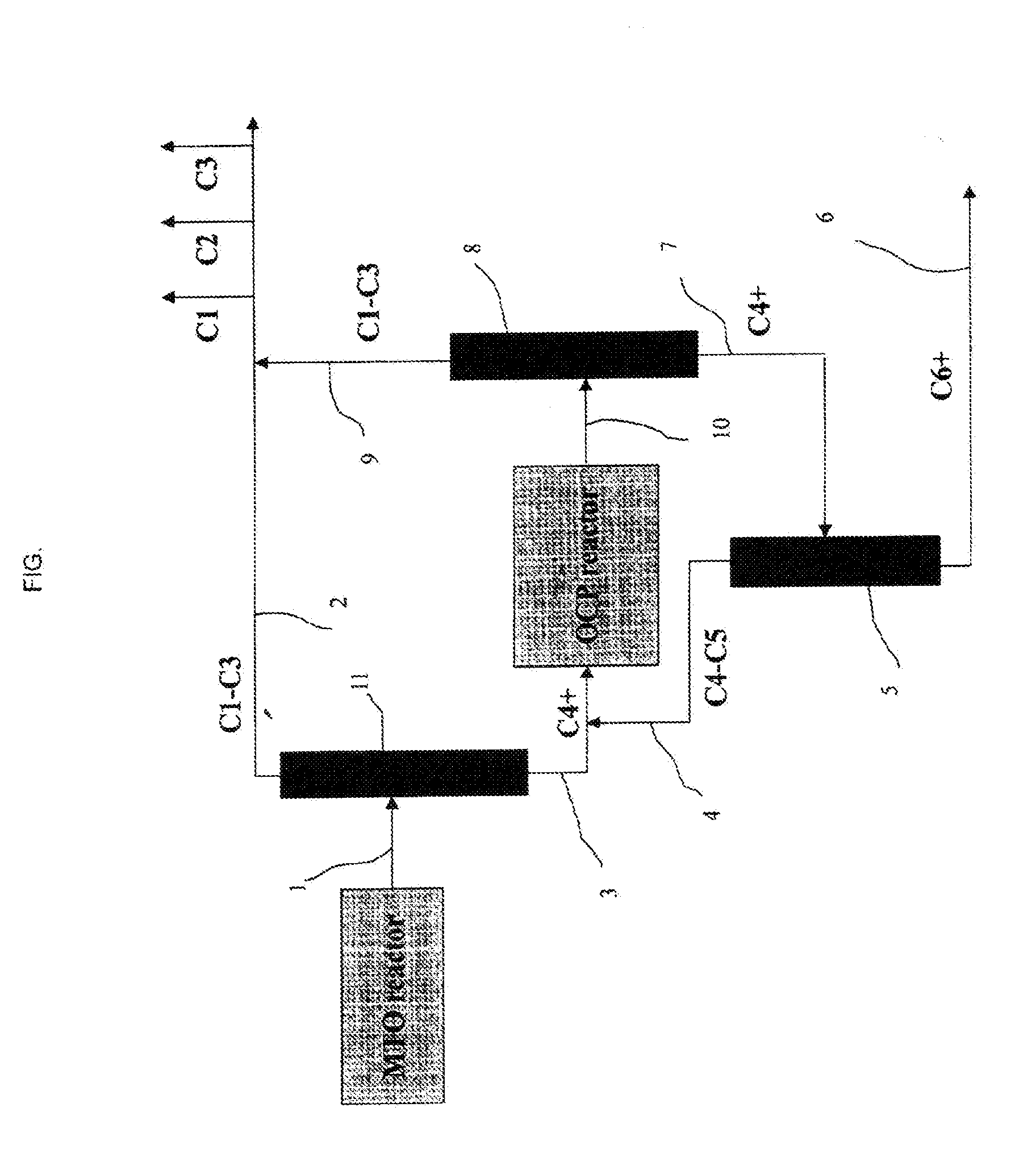Process for Obtaining Modified Molecular Sieves
a technology of molecular sieves and molecular weight, which is applied in the field of modified molecular sieves, can solve the problems of limited supply and increasing crude oil supply, promote unwanted side reactions, and insufficient physical mixing of zeolite with rare earth compounds, etc., and achieve high propylene yield, high propylene/ethylene ratio, and high stability
- Summary
- Abstract
- Description
- Claims
- Application Information
AI Technical Summary
Benefits of technology
Problems solved by technology
Method used
Image
Examples
example 1
[0144]A sample of zeolite ZSM-5 with Si / Al=12 (CBV2314) from Zeolyst International was first calcined for 6 hours at 550° C. (60° / min heating rate). It was then steamed at 680° C. for 2 hours in 100% H2O. The steamed solid was treated with a 3.14-M solution of H3PO4 for 18 h under reflux conditions (4.2 liter / 1 kg of zeolite). The solid was then separated by filtration from the solution. The obtained solid was dried first at 110° C. for 16 h and then calcined at 400° C. for 3 h (P-content 5.2 wt %).
example 2
[0145]The sample prepared according to example 1 was subjected to reflux conditions for 2 hours in contact with hot water. Then the solid was separated by filtering from the solution and dried immediately at 110° C. for 16 hours and steamed at 600° C. for 2 hours. (Atomic ratio Si / Al=15, P-content 2.0 wt %). This sample contains no calcium.
[0146]The sample is hereinafter identified as Comparative I.
example 3
[0147]This example demonstrates the effect of Ca addition on the catalyst performance.
[0148]The sample prepared according to example 1 was impregnated with an aqueous solution of 0.5M calcium acetate (1 ml / 1 g of zeolite) corresponding to 2 grams of Ca per 100 grams of zeolite. The sample was then dried at 110° C. and subjected to reflux conditions in contact with hot water (4.2 ml / g zeolite) for 2 h. The solid was separated by filtration from the solution and dried immediately at 110° C. for 16 h and steamed at 600° C. for 2 h. (Atomic ratio Si / Al 15, P content 2.1 wt %, Ca content 0.3 wt %, P / Ca˜9).
[0149]The sample is hereinafter identified as SAMPLE A.
PUM
| Property | Measurement | Unit |
|---|---|---|
| pores size | aaaaa | aaaaa |
| mole ratio | aaaaa | aaaaa |
| mole ratio | aaaaa | aaaaa |
Abstract
Description
Claims
Application Information
 Login to View More
Login to View More - R&D
- Intellectual Property
- Life Sciences
- Materials
- Tech Scout
- Unparalleled Data Quality
- Higher Quality Content
- 60% Fewer Hallucinations
Browse by: Latest US Patents, China's latest patents, Technical Efficacy Thesaurus, Application Domain, Technology Topic, Popular Technical Reports.
© 2025 PatSnap. All rights reserved.Legal|Privacy policy|Modern Slavery Act Transparency Statement|Sitemap|About US| Contact US: help@patsnap.com

